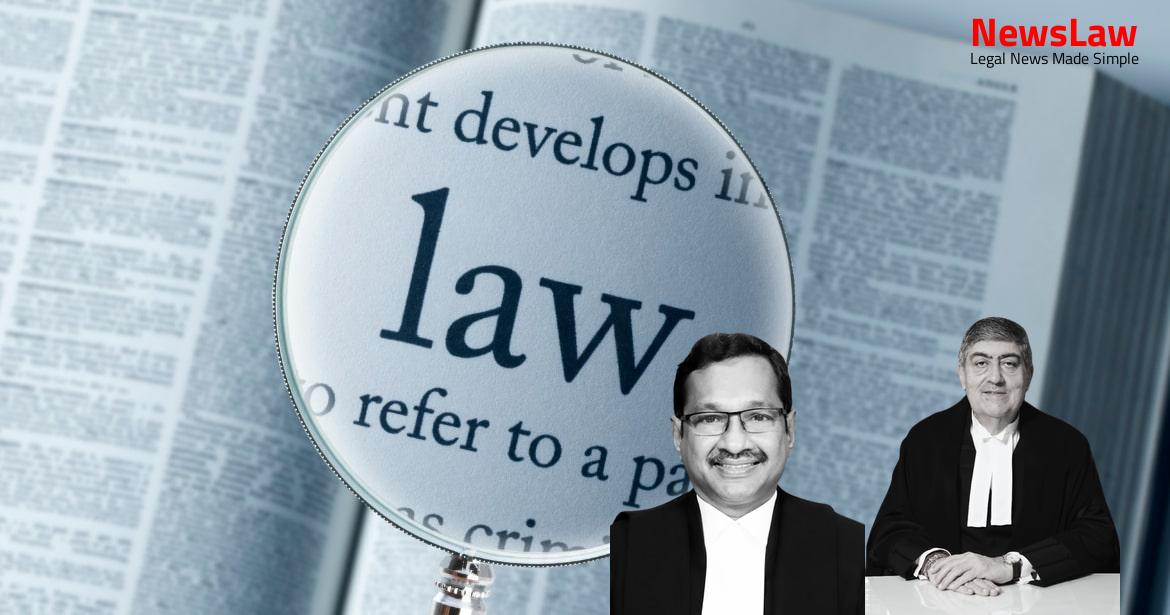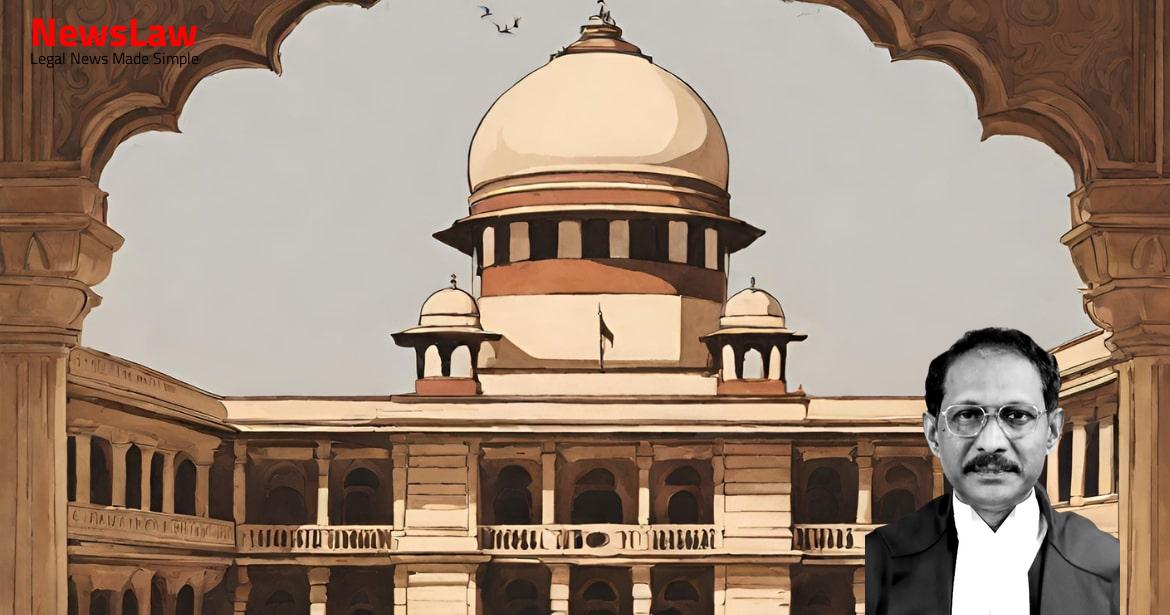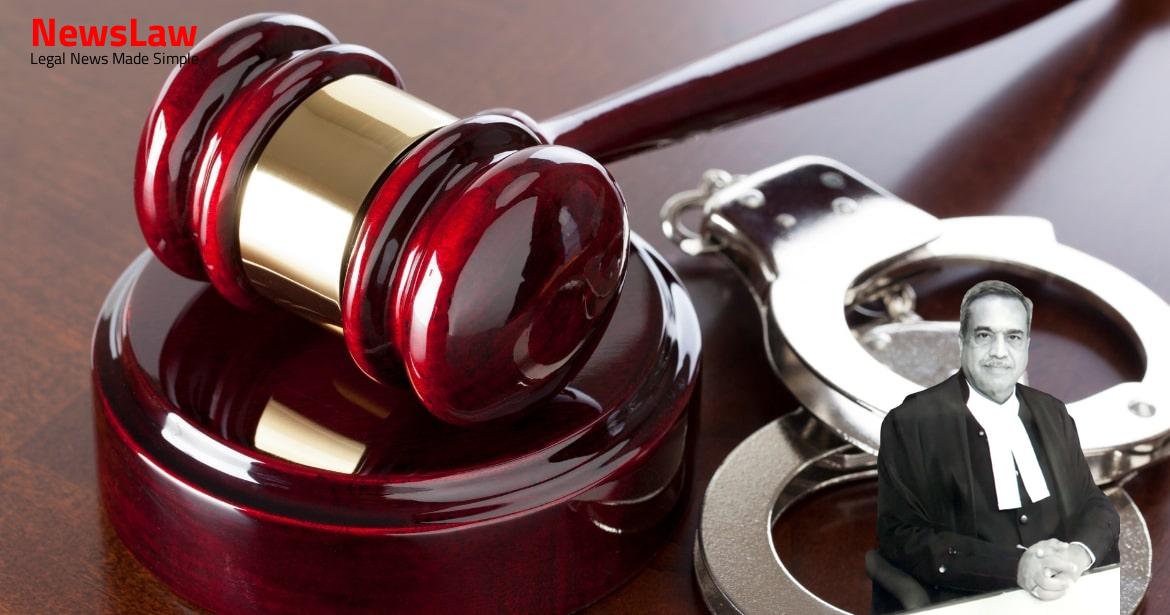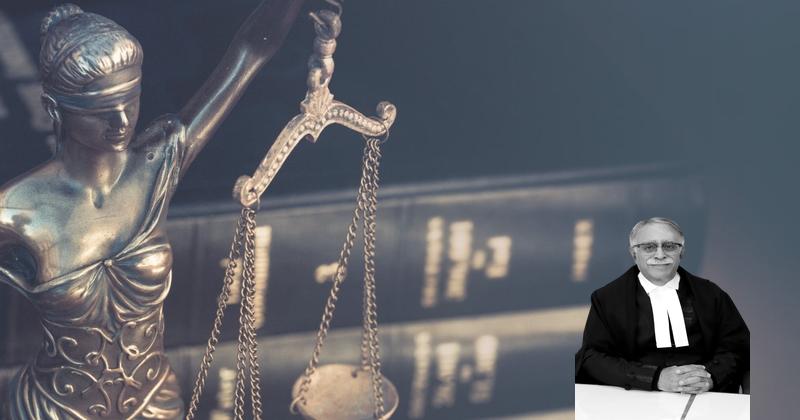Delve into the complex world of legal analysis in appeals against acquittals. The court’s meticulous examination of evidence, scrutiny of witness testimonies, and adherence to statutory provisions come under the spotlight. Understanding the balance between presumption of innocence, appellate court’s scrutiny, and trial court’s judgment is key in the pursuit of justice. Follow along as we navigate through the nuances of legal reasoning and judicial decisions in cases challenging acquittals.
Facts
- Convictions confirmed and acquittals reversed by the Division Bench of the High Court of Kerela under challenge.
- A-2, A-4, A-5, A-8, and A-9 found to have clinching evidence against them.
- Acquittal of A-10 to A-13 based on inconsistencies in eye-witness statements.
- High Court upheld conviction and sentences for A-2, A-4, A-5, A-8, and A-9 under various sections of IPC.
- Acquittal to A-10 to A-13 granted by the Trial Court due to insufficient evidence.
- Efforts to challenge witnesses’ credibility and delays in first information report were considered but not accepted by the High Court.
- The witness could not identify A-11, who was not even named in the first information report.
- He heard the gunshot and attributed the overt act to A-10, A-12, and A-13.
- He wrongly identified A-10 as A-7 and was unable to identify A-12.
- In the altercation, the deceased had reportedly assaulted A-3.
- A-8 and A-9 sustained injuries and received treatment in the hospital.
- Recoveries were made from A-10, A-12, and A-13 on 01.08.2002.
- A-11’s recoveries were made on 13.08.2002.
- The accused, who were acquitted, stand as freemen with no further challenge.
- The convicted accused went to the deceased’s residence armed with deadly weapons in three vehicles on 18.07.2002.
- They indiscriminately attacked the deceased, and the witness wrongly identified A-10 as A-5.
- Post-mortem certificate indicated about 30 ante-mortem injuries on the deceased.
- The injuries were found to be incised, contrary to what A-8 and A-9 claimed.
- The doctor attributed the cause of the injuries to a lorry tire accident.
- The prosecution examined 66 witnesses and marked several exhibits.
- Charges were framed against multiple accused for various offenses.
- The witness statements were recorded days after the incident.
- The witness did not identify A-11 and A-12.
Also Read: Supreme Court Judgment on Single Till Mechanism for HRAB Calculation: A Comprehensive Analysis
Arguments
- The learned counsel for the appellant-accused raised concerns about the delayed lodging of FIR.
- The appellant-accused argued that statements given by them to the police cannot be relied upon by either party.
- The counsel emphasized that unless the trial court’s judgment is found to be perverse, the high court should not set aside an acquittal based on evidential appreciation.
- It was highlighted that there is an enlarged presumption of innocence in appeals against orders of acquittal.
- In cases where two reasonable conclusions are possible based on the evidence, the appellate court should not disturb the trial court’s acquittal.
- The judgment in Murugesan v. State was referenced to understand the powers of the High Court in appeals against acquittals.
- It was reiterated that the High Court can interfere and reverse an acquittal only when the trial court’s conclusion is not a possible view.
- The distinction between a ‘possible view’ and an ‘erroneous view’ or ‘wrong view’ was explained.
- Reference was made to the case Mohan v. State of Karnataka, emphasizing the need for circumspection when the Trial Court has acquitted the accused.
- The respondent’s counsel argued that the delayed lodging of the FIR was a significant factor, especially considering the presence of the prosecutrix’s brother at the house during the incident.
Analysis
- High Court relied on recovery and scientific evidence.
- Section 27 partially lifts ban imposed by Sections 24, 25, and 26.
- Investigating Officer feigned ignorance on witnesses related to A-10 and A-11.
- Importance given to Sessions Judge’s opinion based on proper evidence appreciation.
- Delay in filing FIR questioned authenticity of the report.
- High Court found fault with Trial Court on Section 149 IPC application.
- Court affirms Trial Court’s decision on witness testimonies.
- Appellate Court cautious of reversing trial court’s decision.
- Trial Court reasoning for acquittal deemed acceptable.
- Recovery under Section 27 meant to be just and fair.
- Investigating Officer’s role crucial in ensuring fair investigation.
- Investigating Officer’s delay in recording witness statements raised doubts.
- Delay in FIR reporting considered a factor in case credibility.
- Recovery evidence critical for corroborating testimonies.
- Investigating Officer’s actions under scrutiny for late reports to Magistrate.
- Court stresses on proving foundational facts for Section 149 IPC.
- High Court’s reliance on recoveries questioned by Trial Court decision.
- Court emphasizes on thorough scrutiny of evidence by Appellate Court.
- Different court decisions resulted in case complexities.
- Unexplained inordinate delay impacted prosecution’s case credibility.
- Proper explanation required for delayed witness statements.
- Delay in key reports and procedures cast doubt on prosecution’s story construction.
- High Court decision overshadowed Trial Court’s reasoning for acquittal.
- Court warns against premature condemnation of trial court decisions.
- Adherence to statutory provisions vital for fair trial process.
- Statements under Section 161 Cr.PC and Section 27 subject to procedural safeguards.
- Appellate Court urged to maintain caution in overturning trial court verdicts.
- Court evaluates circumstances leading to delay and doubts in case proceedings.
- Recovery substance and evidence consistency pivotal for case credibility.
- Prosecution’s responsibility to prove facts in recovery under Section 27.
- Court highlights potential foul play risks in delayed information exchange.
- Witness identification and evidence corroboration essential for case validation.
- Court stresses on subjective-free judgement to ensure justice in the case.
- The law under Section 27 of the Evidence Act is well-settled now, emphasizing the need for caution in its application due to frequent misuse by the police.
- Confessions made to a police officer are not admissible in evidence against the accused, based on public policy views.
- In cases of acquittal, there is a double presumption in favor of the accused, with innocence presumed until proven guilty by a competent court.
- The appellate court must conduct a thorough scrutiny based on legal parameters to disturb the double presumption in favor of the accused.
- The High Court, when entertaining an appeal against acquittal, needs to independently review the evidence and arrive at its own conclusions.
- The High Court should only interfere if the trial court’s approach was patently illegal or its conclusions were demonstrably unsustainable.
- The High Court’s power in cases of acquittal is similar to that in cases of conviction, with due consideration for the presumption of innocence and the assessment of trial court judgment.
- Prompt lodging of the FIR is crucial for obtaining early and accurate information about an offense.
- The high authority of the trial court in observing witnesses directly is emphasized while dealing with appeals against acquittals.
- Confessions made to a police officer are absolutely protected under Section 25 of the Evidence Act.
- Section 26 partially bans confessions made to a person other than a police officer, unless in the immediate presence of a Magistrate.
- Confessions by an accused to a police officer are also protected by Section 162 of the Code of Criminal Procedure.
- Confessions or admissions are evidence against the maker unless excluded by law.
- Section 24 excludes confessions obtained through inducements, threats, or promises.
- Section 162 of the Code of Criminal Procedure includes confessions made to a police officer during an investigation.
- Section 26 prohibits proof of confessions made by a person in police custody unless in the immediate presence of a Magistrate.
- The credibility of the prosecution case is called into question.
- Uncertainty arises regarding the reliability of evidence presented by the prosecution.
- This may impact the overall strength of the prosecution’s argument.
- Further review and assessment of the prosecution’s case may be warranted.
Also Read: Selection and Appointment of Judicial Officers in Himachal Pradesh
Decision
- The conviction of the appellants in Criminal Appeal No. 430-431 of 2015 (A-10 to A-13) has been set aside.
- Criminal Appeal No. 450-451 of 2015 and Criminal Appeal No. 959 of 2015 confirming the conviction by the High Court are dismissed.
- The appeals of accused nos. A-10 to A-13 in Criminal Appeal No. 430-431 of 2015 are allowed, setting aside the High Court’s judgment and restoring the Trial Court’s acquittal.
- Any bail bonds related to accused nos. A-10 to A-13 are discharged.
Case Title: JAFARUDHEEN Vs. STATE OF KERALA (2022 INSC 464)
Case Number: Crl.A. No.-000430-000431 / 2015



